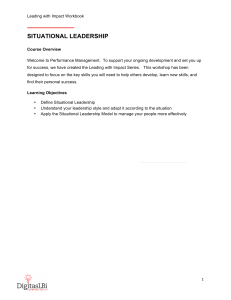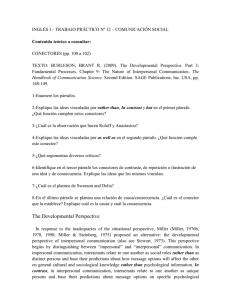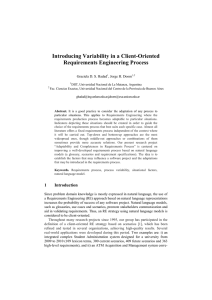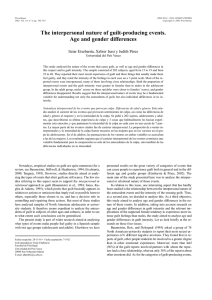The Situational Perspective
Anuncio
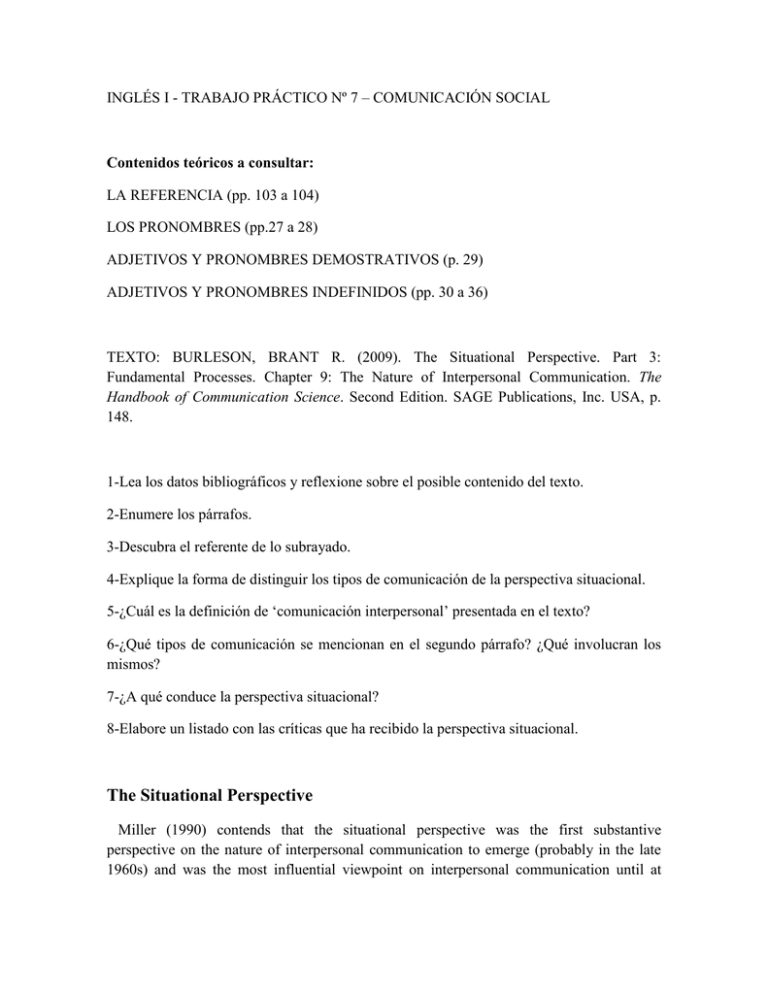
INGLÉS I - TRABAJO PRÁCTICO Nº 7 – COMUNICACIÓN SOCIAL Contenidos teóricos a consultar: LA REFERENCIA (pp. 103 a 104) LOS PRONOMBRES (pp.27 a 28) ADJETIVOS Y PRONOMBRES DEMOSTRATIVOS (p. 29) ADJETIVOS Y PRONOMBRES INDEFINIDOS (pp. 30 a 36) TEXTO: BURLESON, BRANT R. (2009). The Situational Perspective. Part 3: Fundamental Processes. Chapter 9: The Nature of Interpersonal Communication. The Handbook of Communication Science. Second Edition. SAGE Publications, Inc. USA, p. 148. 1-Lea los datos bibliográficos y reflexione sobre el posible contenido del texto. 2-Enumere los párrafos. 3-Descubra el referente de lo subrayado. 4-Explique la forma de distinguir los tipos de comunicación de la perspectiva situacional. 5-¿Cuál es la definición de ‘comunicación interpersonal’ presentada en el texto? 6-¿Qué tipos de comunicación se mencionan en el segundo párrafo? ¿Qué involucran los mismos? 7-¿A qué conduce la perspectiva situacional? 8-Elabore un listado con las críticas que ha recibido la perspectiva situacional. The Situational Perspective Miller (1990) contends that the situational perspective was the first substantive perspective on the nature of interpersonal communication to emerge (probably in the late 1960s) and was the most influential viewpoint on interpersonal communication until at least the mid-1970s. Although quite influential, the origins of the situational approach are unclear. The situational perspective distinguishes types of communication on the basis of features of the communicative context, the most important of which include the number of communicators, the physical proximity of those communicators, the availability of sensory or communication channels (especially nonverbal ones), and the immediacy of feedback received by communicators. Thus, interpersonal communication typically transpires between two people engaged in face-to-face interactions who use both verbal and nonverbal channels and have access to immediate feedback. Group, organizational, public, and mass communication involve increasing numbers of persons and decreasing levels of physical proximity, channel availability, and feedback immediacy. Dyadic communication often serves as a synonym for interpersonal communication in this perspective. The definition by Trenholm and Jensen (2008) presented at the outset of this paper embodies the situational perspective on interpersonal communication. The situational perspective leads to research on ways that contextual factors, especially features of the physical setting, influence processes and outcomes of interactions. Research questions consistent with the situational perspective include the following: Do dyads or groups make better decisions? Does the greater availability of nonverbal cues in dyadic interaction enhance communication fidelity? Does the use of emoticons in the “impoverished” environment of computer-mediated communication increase communicator satisfaction? The situational perspective has been criticized extensively for highlighting less central interaction features (numbers of actors and qualities of the physical setting) while ignoring more substantive features, such as the relationship between the actors and the content of their exchange. Miller (1978) maintains that “situational views of interpersonal communication imply a static, nondevelopmental perspective rather than a dynamic, developmental viewpoint of the process” (p.166). Thus, for example, the situational view equates a face-to-face conversation between a postal clerk and a customer with a conversation between a pair of longtime lovers. Perhaps even more problematic, the situational view maintains that interaction between the postal clerk and a customer is more “interpersonal” than a letter from a soldier to his family that details his deepest thoughts and feelings. More generally, Miller contends that the situational perspective invites an ahistorical concern with the number of people in a context, excludes consideration of other features of the context (such as the quality of the relationship among participants) that may more profoundly influence communication processes and outcomes, and leads to pursuing trivial questions such as “how many people can participate in an interaction before it is no longer ‘interpersonal’ ”.
